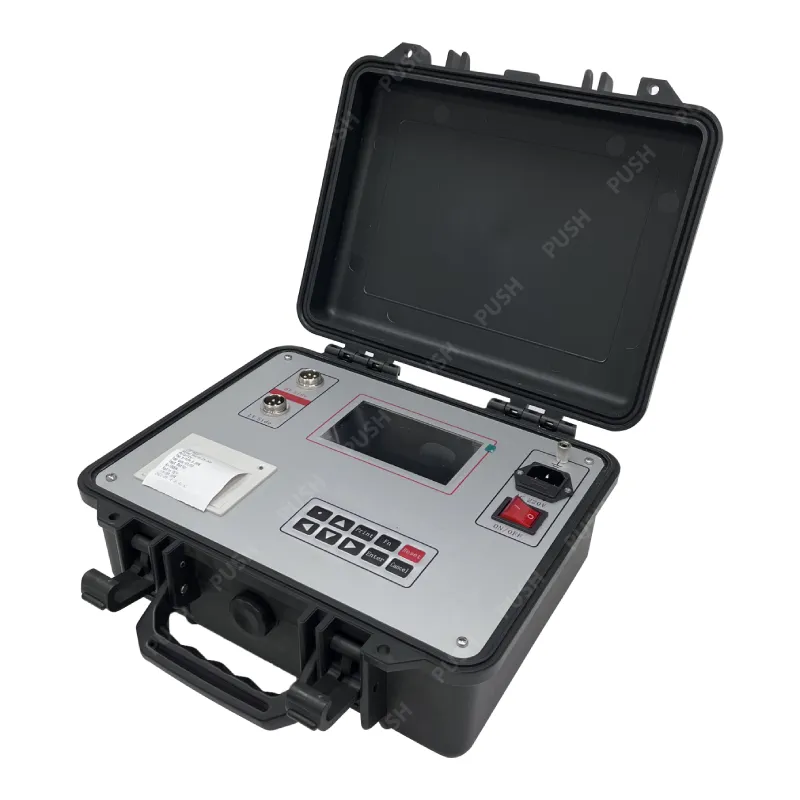 English
English


Transformer Testing Techniques Using a Multimeter for Accurate Measurements
Checking Transformers with a Multimeter
Transformers play a crucial role in electrical systems, facilitating the transfer of electrical energy between circuits through electromagnetic induction. They are commonly used in power distribution systems, electronic devices, and more. As with any electrical component, ensuring that transformers function properly is essential for safe and reliable operation. One of the simplest and most effective ways to check a transformer is by using a multimeter. This article will guide you on how to check a transformer with a multimeter safely and effectively.
Understanding the Transformer
Before diving into the testing process, it's important to understand the components of a transformer. A basic transformer consists of two windings the primary winding, which receives the input voltage, and the secondary winding, which delivers the output voltage. The relationship between these two can be expressed through the turns ratio, which directly affects voltage transformation.
Safety Precautions
Safety should always be your top priority when dealing with electrical equipment. Before you start testing a transformer, ensure that it is disconnected from any power source. Wear appropriate personal protective equipment (PPE), including gloves and safety glasses. Confirm that the multimeter is functioning correctly and set to the appropriate measurement mode.
Steps to Check a Transformer with a Multimeter
transformer checking with multimeter

1. Visual Inspection Begin with a thorough visual inspection of the transformer. Look for signs of damage, such as burnt areas, frayed wires, or corrosion. Any physical damage may indicate internal faults.
2. Check Resistance of Windings - Set your multimeter to the resistance (Ω) setting. Disconnect the transformer from the circuit if not already done. - Measure the resistance across the primary winding terminals. This shows the condition of the primary winding. Repeat the process for the secondary winding. - Compare the resistance readings with the specifications typically provided in the manufacturer's datasheet. A significant deviation may indicate an issue, such as a short or open circuit.
3. Inspect for Short Circuits - With the multimeter still in resistance mode, check for shorts between the windings and the transformer's core. Place one lead on a winding terminal and the other on the core or the chassis. A low resistance reading (close to zero) may suggest a short circuit.
4. Measure Voltage - If you wish to check the transformer while it is powered (make sure that all safety measures are observed), switch the multimeter to the AC voltage (V~) setting. - With the transformer connected to the power source (but ensuring all safety gear is in use), measure the voltage output from the secondary winding. It should match the expected output based on the turns ratio. - Also, compare the input voltage at the primary winding to ensure that it matches the intended supply voltage.
5. Check for Leakage Current - In some cases, transformers may develop leakage currents that are difficult to detect. To check for this, set your multimeter to the current (A) setting and measure between the transformer's core and the windings.
Conclusion
Using a multimeter to check a transformer is a straightforward yet crucial process to ensure that transformers function properly and safely in various applications. By following the steps outlined above, you can identify potential issues such as open or short circuits, voltage discrepancies, and more. Regular testing, combined with good maintenance practices, can greatly extend the life of transformers and enhance the overall reliability of electrical systems. Always prioritize safety, and don’t hesitate to consult a qualified electrician if you encounter any problems beyond basic testing.
-
Differences between open cup flash point tester and closed cup flash point testerNewsOct.31,2024
-
The Reliable Load Tap ChangerNewsOct.23,2024
-
The Essential Guide to Hipot TestersNewsOct.23,2024
-
The Digital Insulation TesterNewsOct.23,2024
-
The Best Earth Loop Impedance Tester for SaleNewsOct.23,2024
-
Tan Delta Tester--The Essential Tool for Electrical Insulation TestingNewsOct.23,2024





